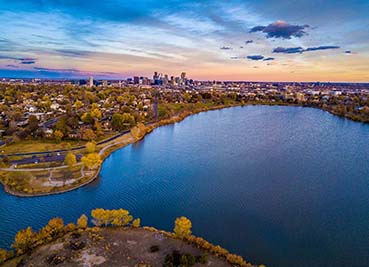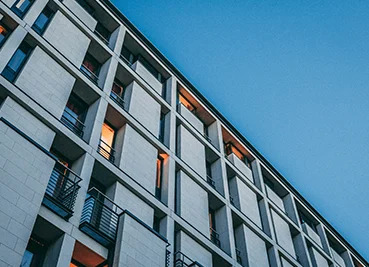For First Time in Seven Years, Investors Plan To Shift Focus to Secondary Markets Such as Texas Capital
By Candace Carlisle
CoStar News – March 25, 2021 | 8:50 A.M.
Real estate investors, after a hiatus in the pandemic’s early days, are expected to expand their return to the market this year with a preference for two Texas metropolitan areas: Austin and Dallas-Fort Worth.
CBRE, the world’s largest real estate brokerage firm, surveyed nearly 150 Americas-based investors between Dec. 9 and Feb. 2. In a first for the seven years of the survey, large investors with more than $50 billion of assets under management plan to shift their focus to secondary markets rather than primary markets, with the Sun Belt being most appealing. Austin edged out Los Angeles for the top spot this year.
The findings of the Americas Investor Intentions Survey, released Thursday, show optimism among well-capitalized buyers on the hunt for opportunistic and distressed real estate, even in what the brokerage calls a seller’s market. Competition among investors has grown intense, said Chris Ludeman, global president of capital markets at CBRE, which recently moved its corporate headquarters to Dallas from Los Angeles.
“Investors in the Americas appear more aggressive and will accept more risk to achieve higher returns,” Ludeman said in a statement. “This is likely due to a stable economic environment, supported by government stimulus, and the belief that available capital will remain abundant for the foreseeable future. While the equity markets have signaled rising inflation expectations, at the time of the survey commercial real estate investors did not appear to be overly concerned in the near term.”
Overall, the survey found investor sentiment and activity began to improve in the second half of 2020 after the pandemic temporarily closed most of the country a year ago. That recovery is only expected to continue this year as vaccinations become more widespread. A record number of investors, about 30% of those surveyed, said they plan to target opportunistic and distressed assets this year, which is up from 16% the previous year.
It may be a seller’s market, with 70% of respondents planning to buy at least 20% more than they did last year and only 30% planning to sell at least 20% more than they sold last year. This could drive pricing, especially for logistics and multifamily properties, with the survey finding investors expect pricing to be aggressive and discounts anticipated on other property types.
This could mean investors will shop for a variety of properties, with popular targets including life sciences labs, medical offices and single-family rentals. Cold-storage facilities and data centers were also popular among those surveyed.
The Texas capital city of Austin topped the list of preferred markets by investors, echoing preferences seen from other industry group reports, followed in order of preference by the Dallas-Fort Worth area, Los Angeles, Phoenix and Denver.
“Sun Belt markets garnered more interest from investors than gateway markets, based on strong job and population growth prospects and, in most cases, higher yields,” according to the CBRE survey. “Austin displaced Greater Los Angeles as the most preferred market in 2021, buoyed by proven labor market resilience during the pandemic and a steady growth outlook.”
Sun Belt markets were among the top-performing metropolitan areas where the least number of jobs were lost in 2020, according to the survey. Denver and Miami also gained steam in CBRE’s market ranking because many people moved to those cities.
“Remote working has accelerated the labor migration trend into these relatively low-cost markets with developed suburbs,” the CBRE survey authors stated. “The rankings also reveal the sustained appeal of tech-driven markets. Austin, Denver, San Francisco and Seattle ranked among the Top 10 markets for the sixth straight year.”
Austin, known for being a tech town, has been home to tech giants for decades, with search engine provider Google’s offices being part of the city since 2007, iPhone maker Apple setting up shop in the Texas capital since the early 1990s, and Samsung opening its campus in 1996. Austin’s reputation has only grown in the past year, with Tesla deciding to put a $1.1 billion factory in Austin, followed by the corporate relocation of companies such as Oracle and Digital Realty Trust from California.
“Real estate demand is relatively high right now and will continue to be high as companies keep pushing to be in the Sun Belt,” said Creighton Stark, an executive vice president at Colliers International with decades of capital markets experience, in a phone interview.
The investor interest in Austin was so strong, one brokerage firm decided to hire a broker from New York City to set up shop in Austin, with John Alvarado, vice chairman with Newmark’s Texas investment team, saying Austin has not seen a significant decline in pricing, with it being “the most aspirational market in Texas.”
That sentiment is shared among other real estate brokers working the Austin market, with longtime investment broker Mike McDonald, a vice chairman in Cushman & Wakefield’s capital markets group who is marketing properties in the Texas capital city, saying recently, “Austin is obviously one of the best cities in America for investors.”
Even the most popular cities in the survey have their challenges. Like any other U.S. metropolitan area, Austin has been hit by the pandemic, with an excess amount of office space available for sublease and even more new office construction on the way, which are some points that shouldn’t be ignored by would-be investors, said Sam Tenenbaum, CoStar’s director of market analytics for Central Texas
“In looking at the data, Austin, right now, is in a little more precarious position than the survey would indicate,” Tenenbaum said in a phone interview. He said he expects demand for all types of real estate to continue in Austin, but it’s a question of how much demand will come to the city and how it balances out with the supply hitting the market.
Evan Stone, managing partner of Dallas-based Goodwin Partners, said even with the weakness in the office market spurring several larger tenants to back away from their new space, fueling the increase of sublease space seen in both Austin and Dallas, “everyone believes the excess space is going to be absorbed in a matter of two to three quarters.”




